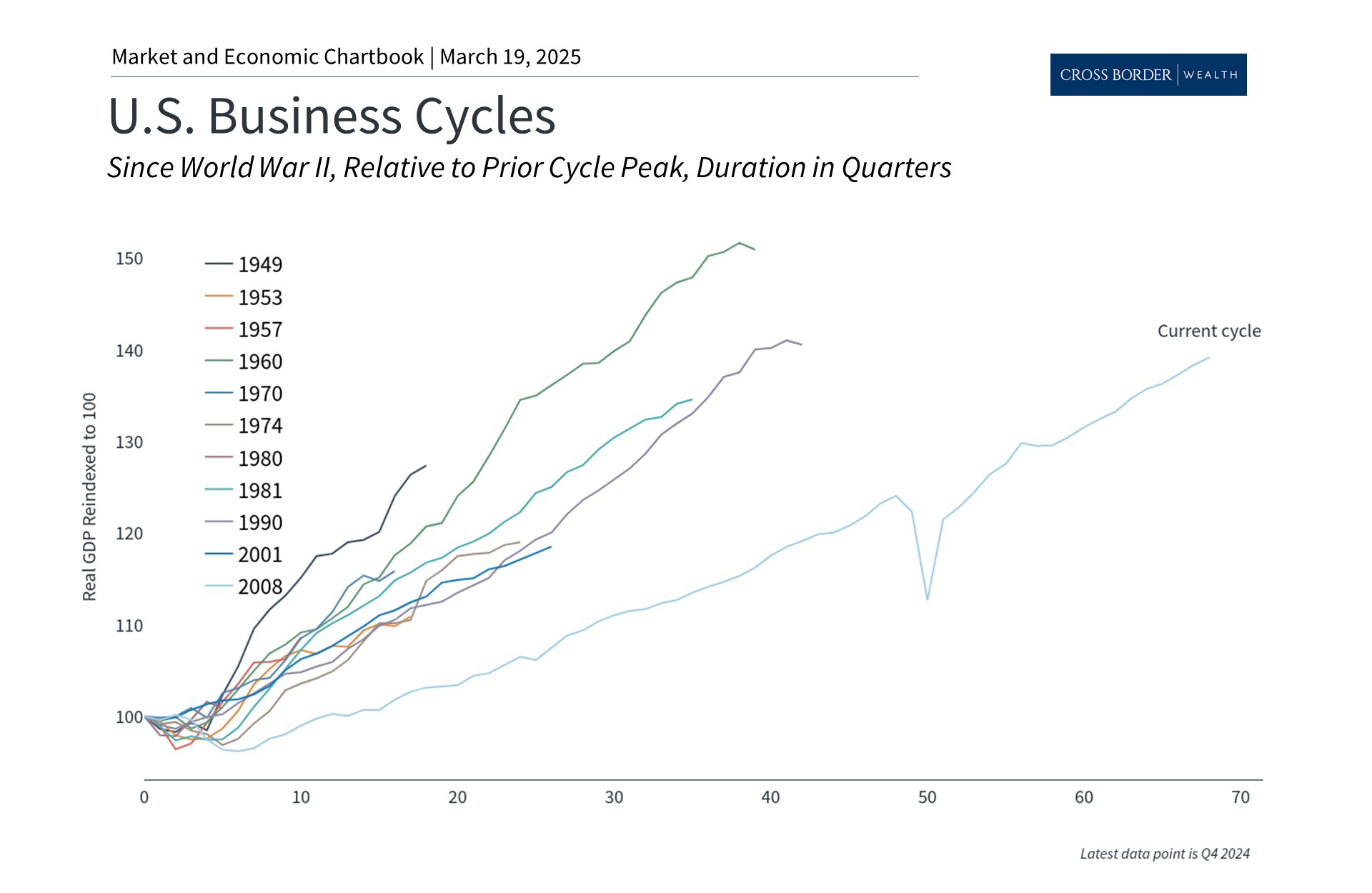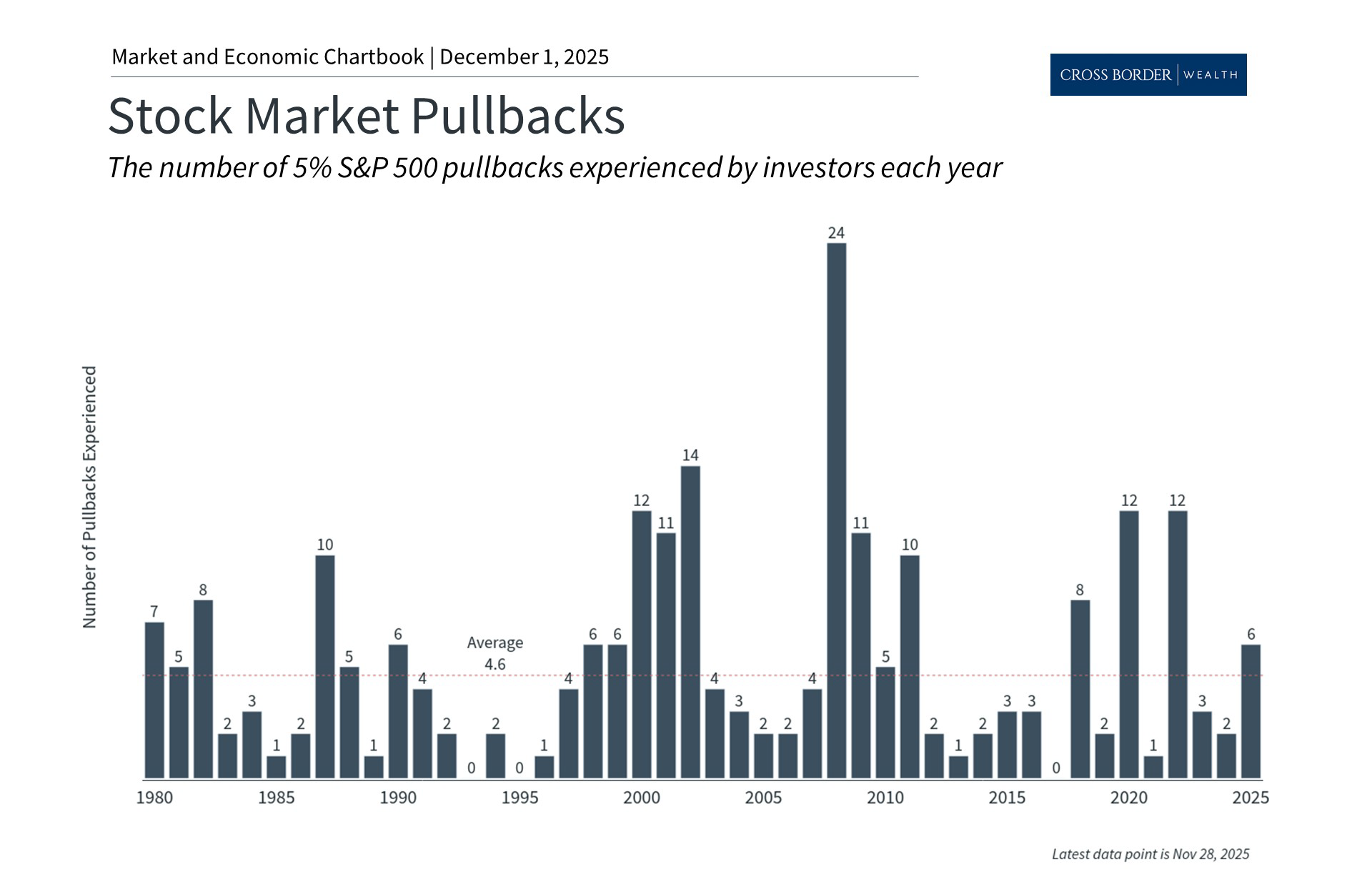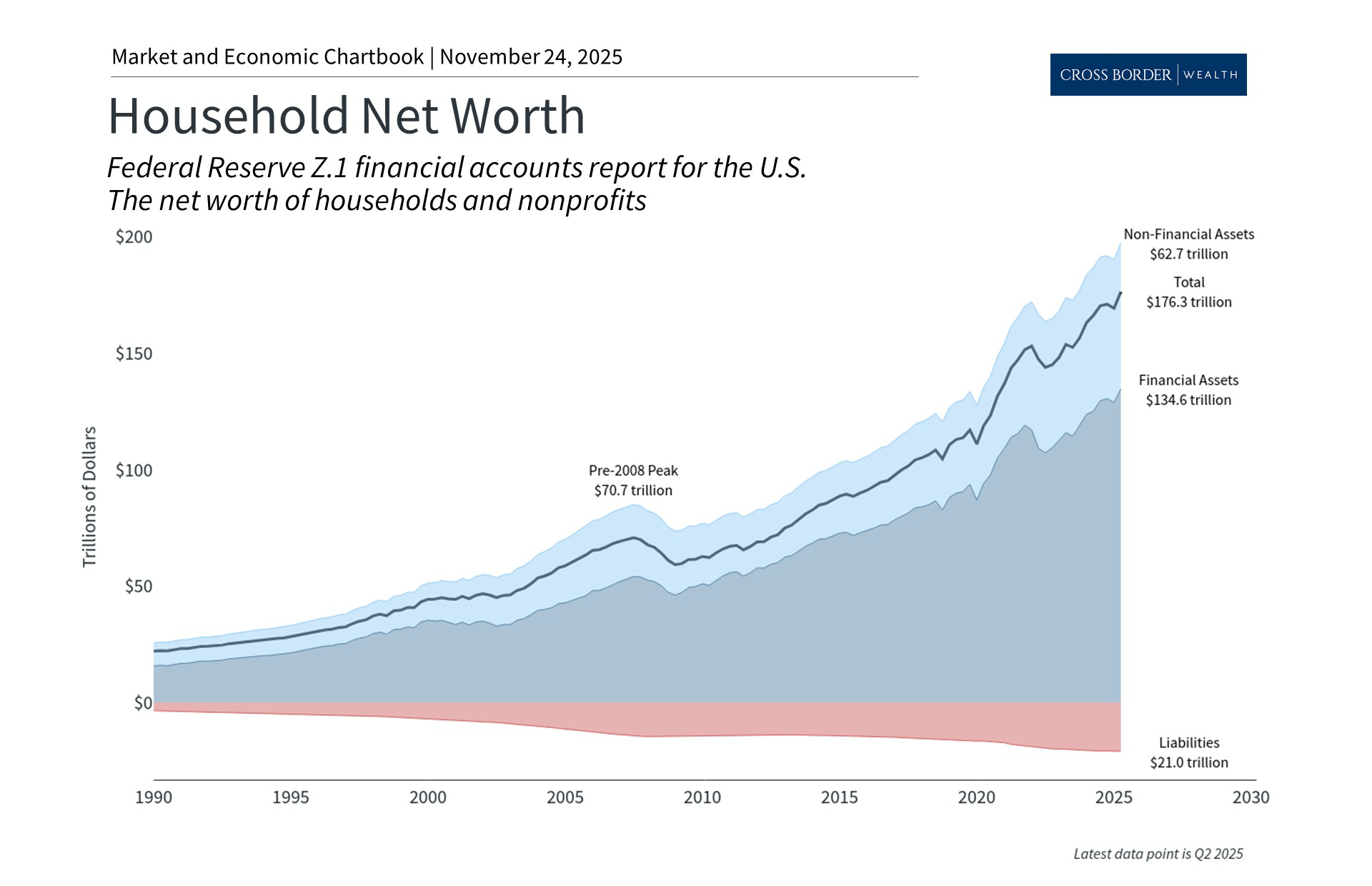The Importance of Business Cycles in Financial Planning
- Market Insights
- 6 mins

Get investing insights for US-connected global citizens.
Book a free consultation with our cross-border advisors.
When it comes to financial planning, it's important to recognize what we can and cannot control. We can control our own behavior, make thoughtful financial plans, and adjust our strategies as needed. However, we don't control the economic cycle, market movements, or policy decisions that impact the broader financial landscape. Recognizing this distinction allows us to focus on the aspects of our financial lives where our decisions truly matter.
With some investors now worried about a possible recession and the stock market facing heightened uncertainty, we believe it’s a good time to review the fundamentals of business cycles and how they affect financial planning.
What is the business cycle?

Past performance is not indicative of future results
Business cycles represent the broader economy’s movement through periods of growth and recession, measured by metrics like GDP, employment, industrial production, and more. While the duration of a business cycle can vary significantly, they tend to occur over long periods, lasting 5-10 years on average.
According to the National Bureau of Economic Research, there have been twelve recessions since World War II. In the last 25 years, we have experienced three: the 2020 pandemic recession, the 2008 global financial crisis, and the 2001 dot-com bust. Of course, there have been many more cases when investors and economists feared there might be a recession.
Business cycles have also grown longer since the “stagflationary” period of the 1970s and early 1980s. The steady growth period until 2008 is often known as “The Great Moderation” - a period when the economy was strong, inflation was moderate, unemployment remained low, and the average cycle length was nearly nine years.
Phases of the business cycle
While each business cycle is unique, there are patterns that have emerged over time. In general, business cycles can be characterized by four distinct phases:
- Expansion - During this phase, the economy grows, unemployment falls, consumer confidence rises, and business activity increases. GDP growth is positive, and companies often invest in new capacity.
- Peak - This is the point where growth reaches its maximum. The economy is operating at or near full capacity, inflation may begin to rise, and signs of overheating might appear.
- Contraction - During this phase economic activity slows, companies may reduce hiring or lay off workers, and GDP growth slows or becomes negative. Consumer spending typically decreases during this phase.
- Trough - This is the lowest point of the cycle, where economic decline bottoms out before beginning to recover. Unemployment is typically at its highest, and business confidence is low.
Each phase may not be equal in length, and there are both situations where business cycles last longer than some expect and cases where cycles end abruptly.
For example, during the 1990s business cycle, the economy slowed sharply in 1995 without falling into a recession. The Fed was able to achieve a so-called “soft landing” by lowering inflation without negatively impacting economic growth.
In contrast, the 2008 global financial crisis resulted in a swift economic decline due to a rapid collapse in the financial sector. The same is true in 2020 when the nationwide shutdown resulted in a sharp decline in economic activity.
Trying to precisely time business cycles is notoriously difficult. This is one reason economics is often referred to as “the dismal science” - it has a poor track record of predicting recessions, and often predicts ones that never occur. However, recognizing where we generally are in these cycles can help us make better financial decisions nonetheless.
Distinguishing between business and market cycles

Past performance is not indicative of future results
Market cycles can be more volatile and occur more frequently than business cycles. The stock market can experience multiple corrections within a single business cycle, including several short-term pullbacks each year, due to investor sentiment, liquidity conditions, and other factors beyond the economy.
This is because the market is anticipating the future while economic data is often backward-looking. Markets are certainly influenced by economic data, but news headlines, sentiment, and many other data points are also taken into consideration by investors. This means that markets can often overreact to short-term events.
Financial planning through cycles
Rather than attempting to time markets, the following approaches can help. The key is to ensure you stay on track with your financial goals throughout business and market cycles:
- Maintain a long-term perspective - Short-term market movements often appear as mere blips when viewed over decades. They can sometimes be inaccurate indicators of the business cycle. For example, the 2022 stock market correction did not accurately predict an economic decline.
- Portfolio rebalancing - Regular portfolio rebalancing enforces the discipline to “buy low and sell high” by reducing positions that have appreciated and adding to those that have underperformed. When appropriate, this systematic approach can help navigate market cycles without succumbing to emotional decision-making.
- Adjust expectations by cycle phase - During late-cycle periods when valuations are stretched, future returns may be lower. Consider moderating return expectations during these phases rather than chasing higher yields through excessive risk-taking.
- Have an emergency fund - Financial plans should take into account the fact that downturns are inevitable. Emergency funds covering 6-12 months of expenses provide crucial flexibility during contractionary periods, particularly if job security becomes a concern.
Portfolio resiliency across all phases of the business cycle
Constructing an appropriate portfolio remains the cornerstone of investing across business cycles. Different asset classes can respond in unique ways to changing economic conditions. For example, stocks typically benefit from economic expansions but struggle during contractions. In contrast, bonds can generate income during expansions and provide portfolio balance during contractions.
The right portfolio differs for each person, balancing these asset classes according to your time horizon, risk tolerance, and financial goals. A well-diversified portfolio might underperform the hottest asset class during any given cycle, but it also avoids the most severe drawdowns that can derail financial plans.
Cross Border Wealth is a SEC-registered investment adviser which may only transact business in those jurisdictions in which it is registered or qualifies for an exemption or exclusion from registration requirements.
Cross Border Wealth may discuss and display charts, graphs, formulas, stock, and sector picks which are not intended to be used by themselves to determine which securities to buy or sell, or when to buy or sell them. This specific information is limited and should not be used on their own to make investment decisions.
All information provided in this article is for educational purposes only and does not intend to make an offer or solicitation for the sale or purchase of any specific securities, investment, or investment strategies. Please ensure to first consult with a qualified financial adviser and or tax professional. Further, please note that while said information has been obtained from known sources which are believed to be reliable, none of these are guaranteed.


